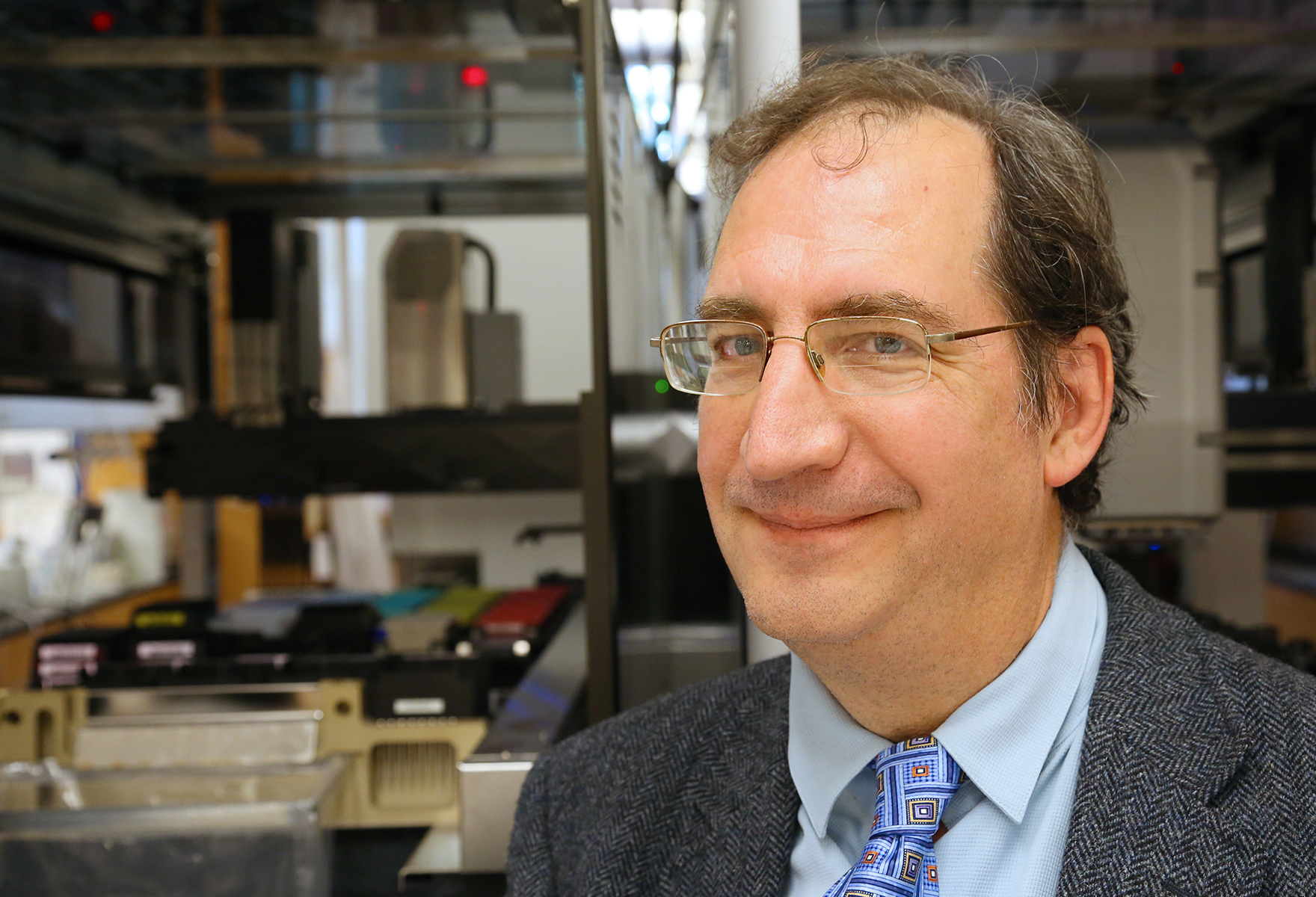Bryan L. Roth, MD, PhD, in the UNC School of Medicine’s pharmacology department, was among 200 new members elected today to the country’s oldest academy.

Bryan L. Roth, MD, PhD, in the UNC School of Medicine’s pharmacology department, was among 200 new members elected today to the country’s oldest academy.

April 17, 2019
Bryan L. Roth, MD, PhD, the Michael Hooker Distinguished Professor of Protein Therapeutics and Translational Proteomics in the Department of Pharmacology in the UNC School of Medicine, was elected today to the American Academy of Arts and Sciences, along with two other UNC-Chapel Hill professors, Jodi Magness, PhD, in religious studies, and Kathleen Harris, PhD, in sociology, both in the UNC College of Arts and Sciences.
Roth, a member of the UNC Lineberger Comprehensive Cancer Center and the UNC Neuroscience Center, was one of six scientists selected who focus on neuroscience, cognitive science, and behavioral biology. In total, 200 new members were recognized today for their “outstanding achievements in academia, the arts, business, government, and public affairs.
Roth, who holds an appointment in the UNC Eshelman School of Pharmacy, came to the UNC School of Medicine in 2006 after 15 years at Case Western University. He is the director of the National Institute of Mental Health Psychoactive Drug Screening Program.
Roth’s lab invented a technology called Designer Receptors Exclusively Activated by Designer Drug (DREADD), which is now used in hundreds of labs around the country searching for more targeted therapies for a variety of conditions.
Roth most recently has teamed up with colleagues around the world, including at UC-San Francisco, to solve the crystal structures of various brain cell receptors attached to known compounds. Learning what these tiny, complex receptors look like bound to a compound that activates them is considered the first big step toward creating better therapies for a host of conditions, without causing dramatic side effects. In 2018, Roth and colleagues were the first to solve the crystal structure of the activated kappa opioid receptor bound to a derivative of morphine. They then created a new drug-like compound that activates only that receptor, a key step in the development of better pain medications. Before that, Roth and colleagues were the first to solve the crystal structure of a serotonin receptor bound to LSD, learning along the way why the psychoactive effects of LSD last so long.
Roth, Magness, and Harris will be inducted at a ceremony in October in Cambridge, MA. The Academy of Arts and Sciences was founded in 1780 by John Adams, John Hancock, and others to honor individuals from diverse fields. Read more about today’s announcement here.